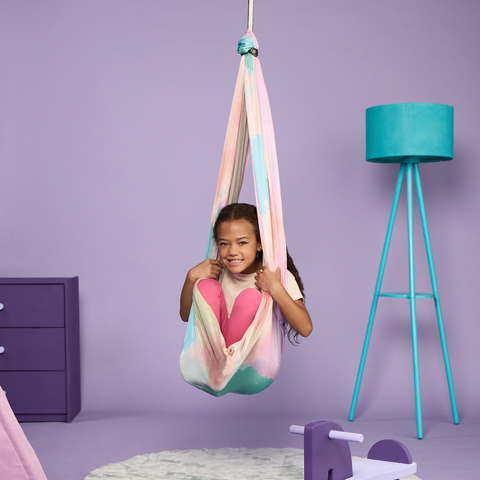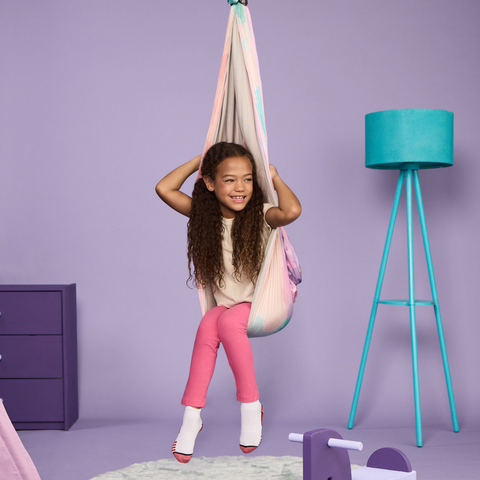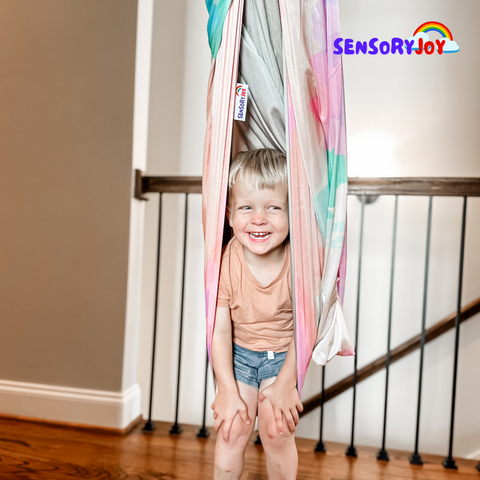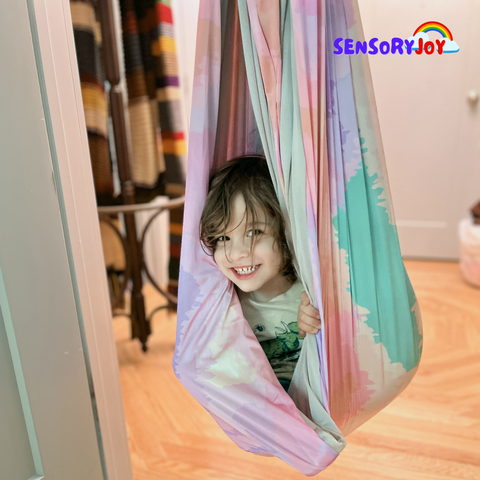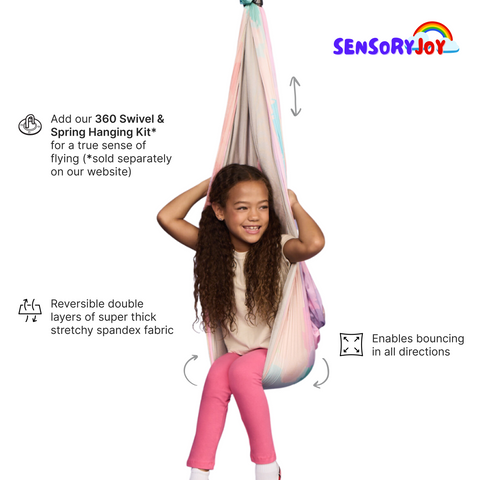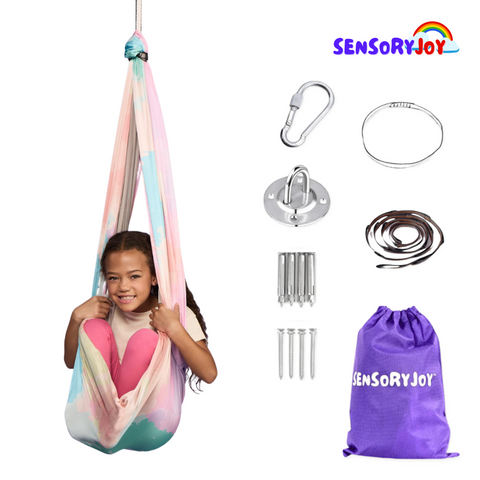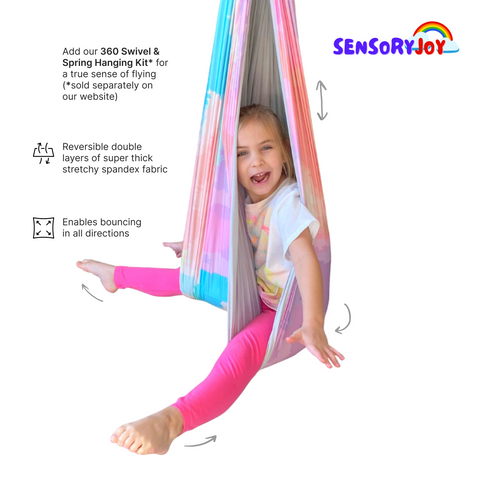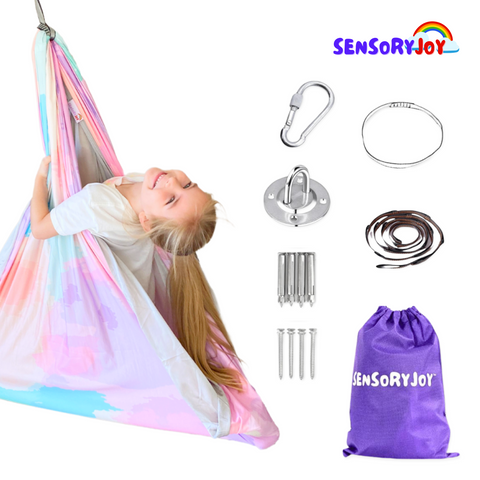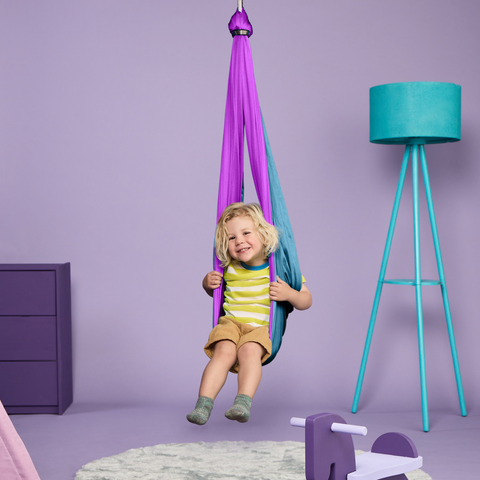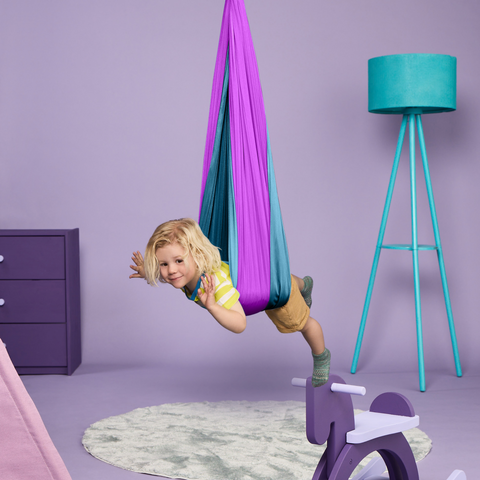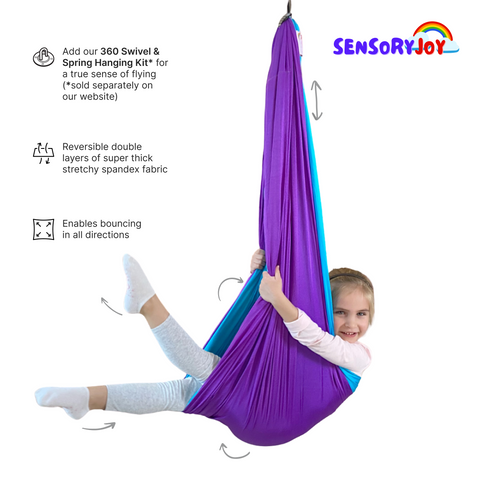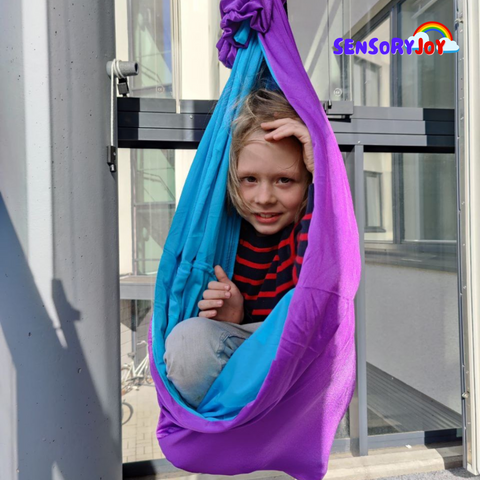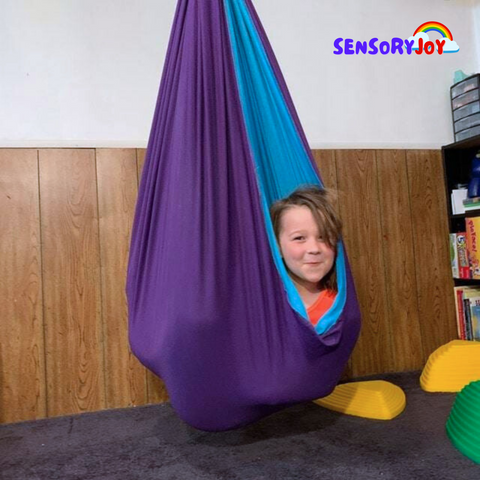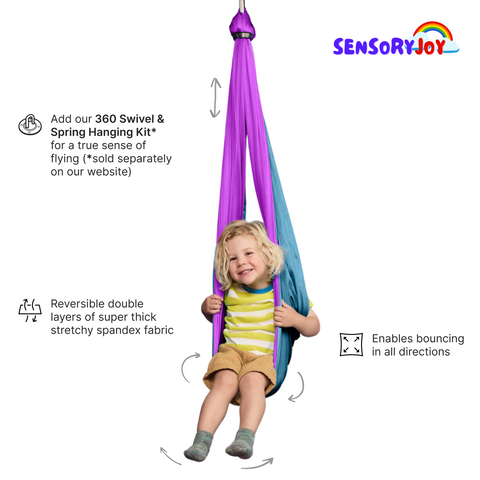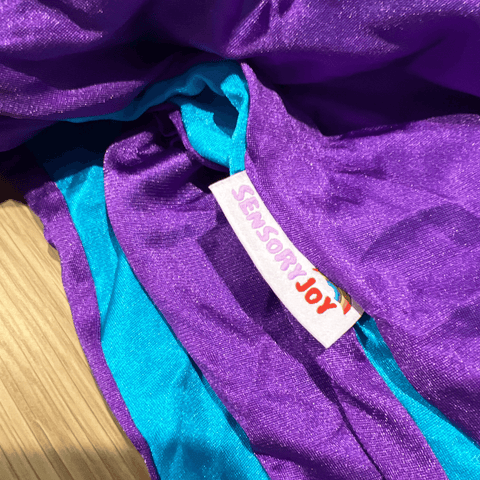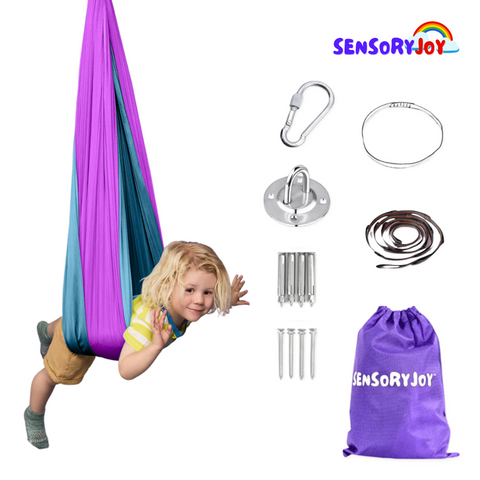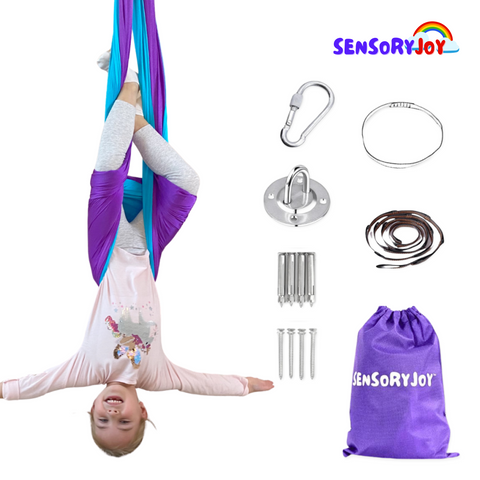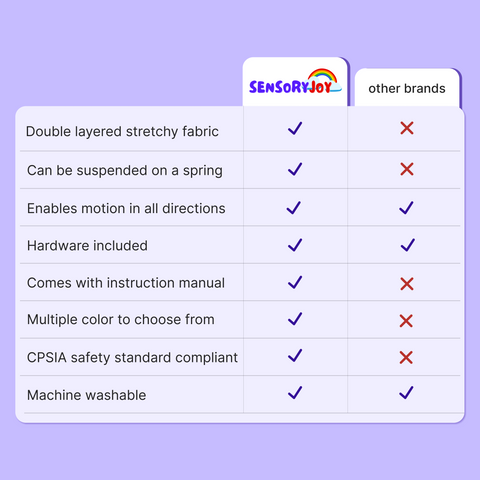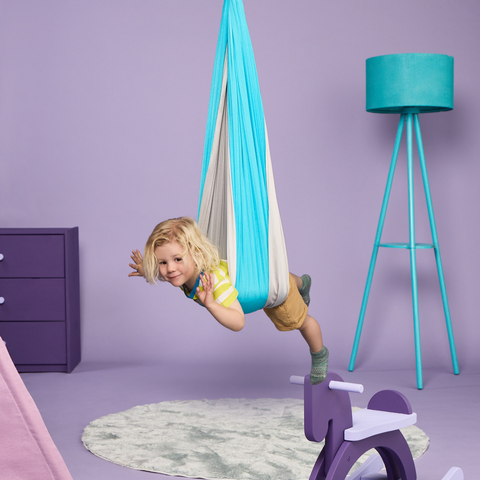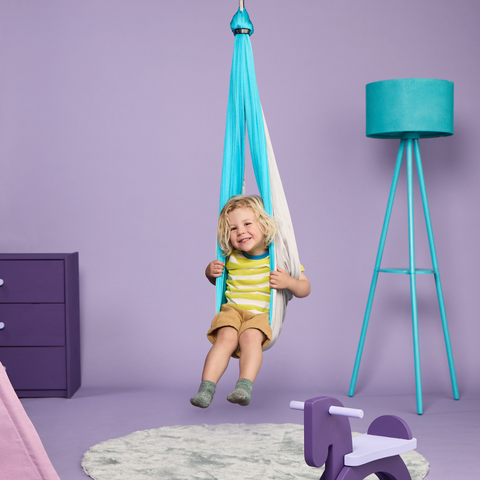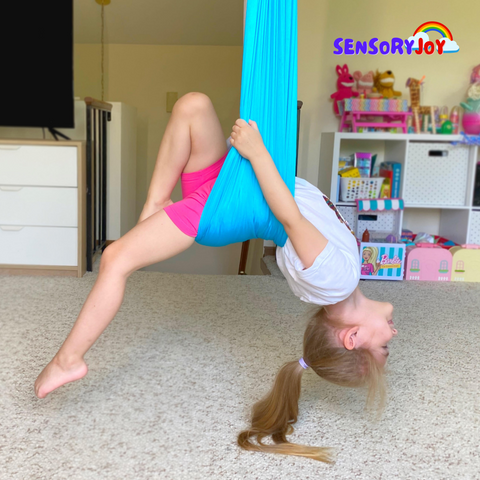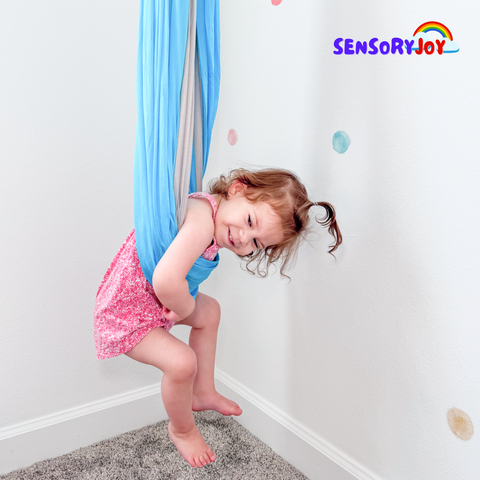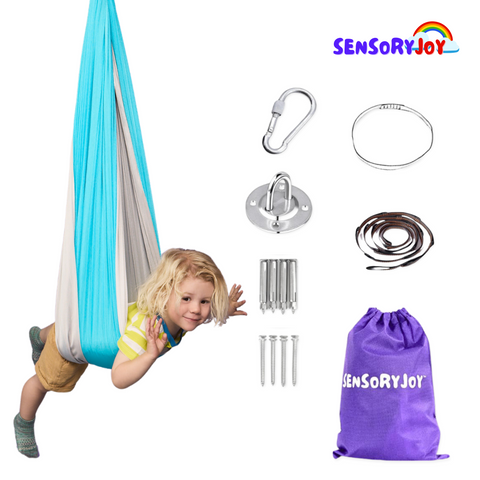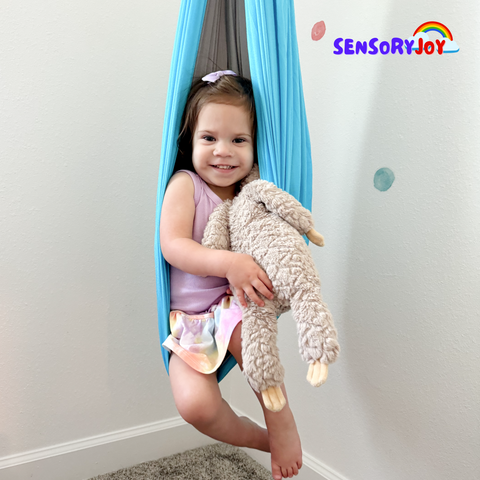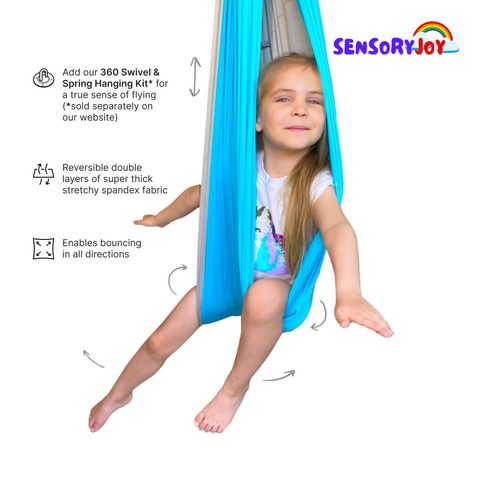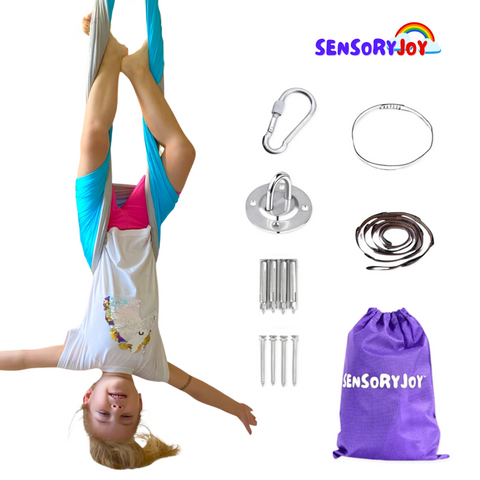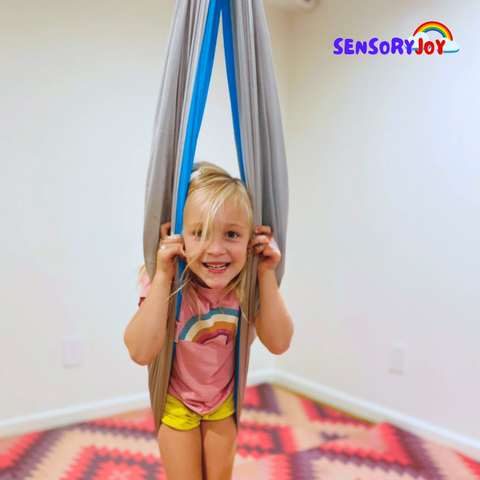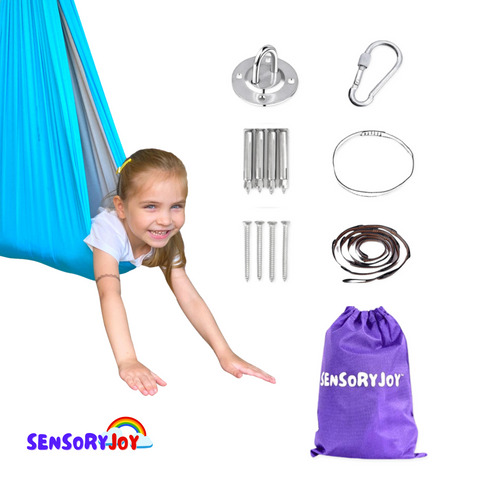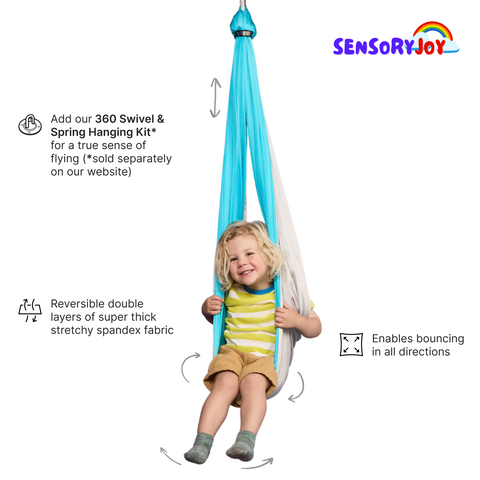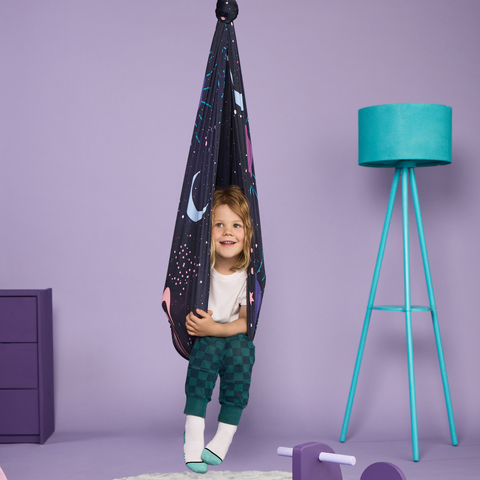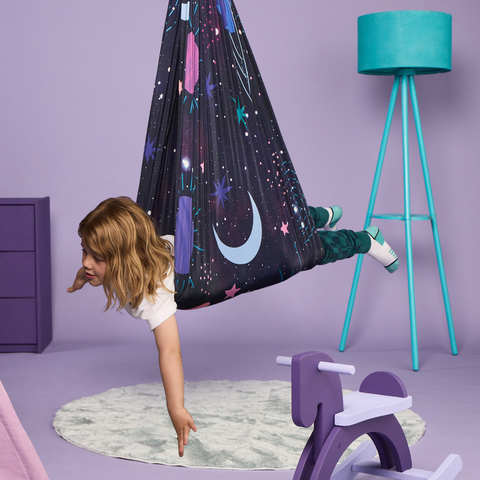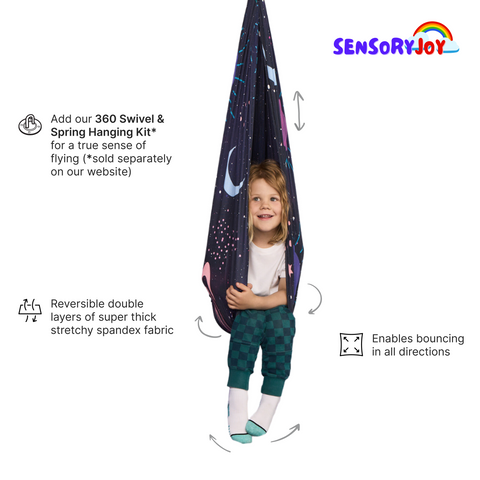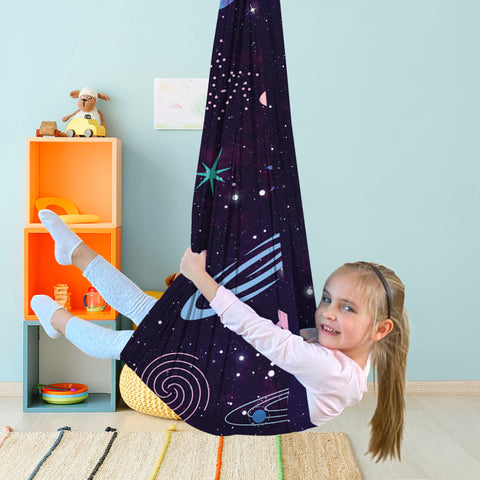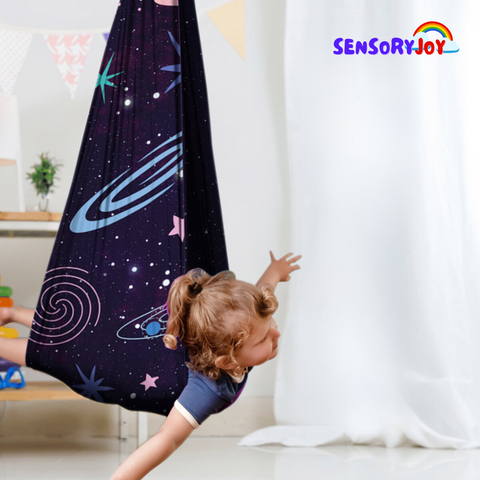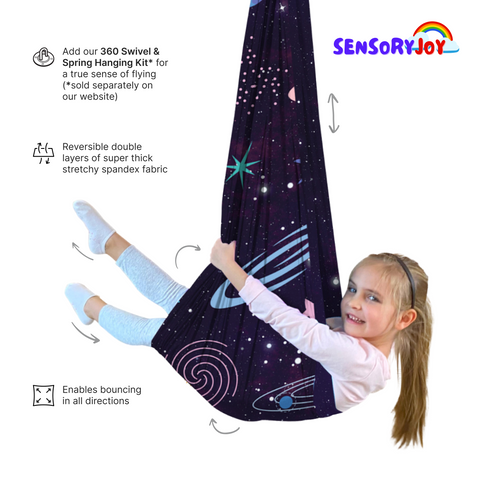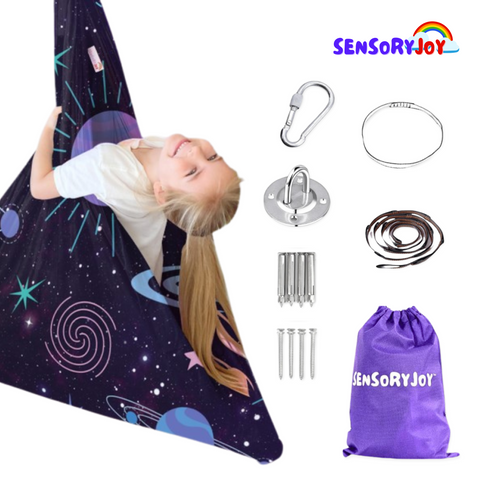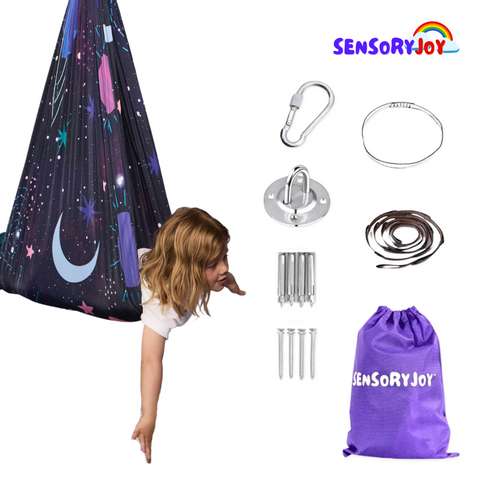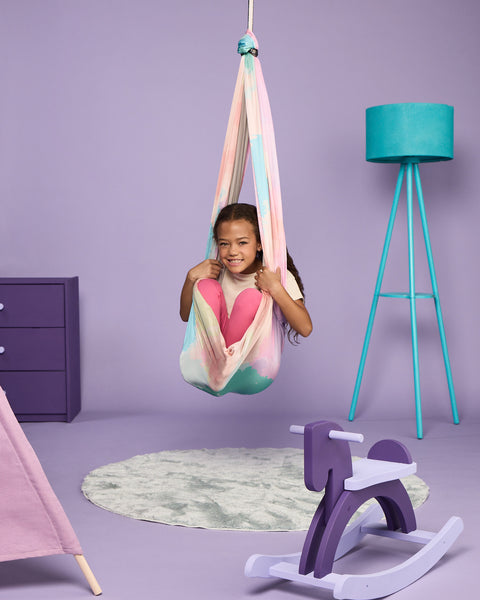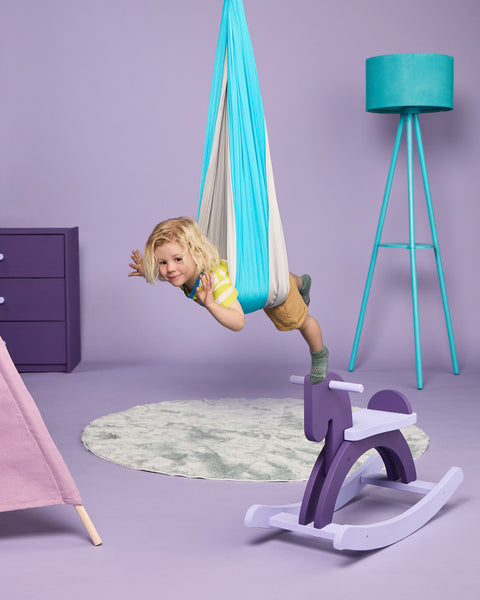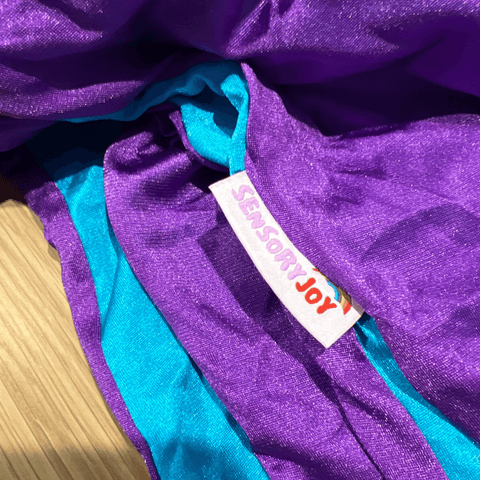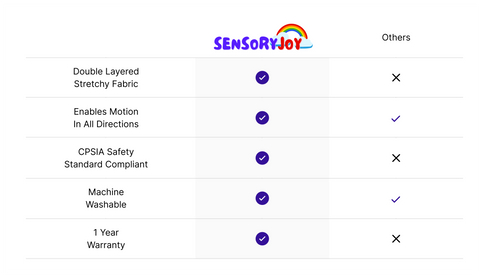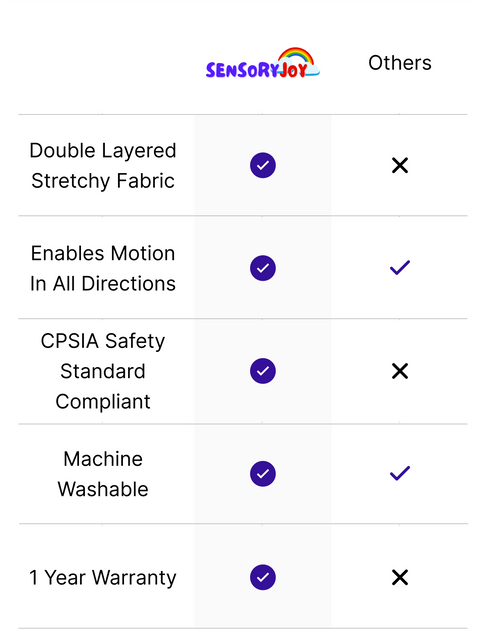Self-Regulate, De-Stress & Manage Other Sensory Challenges Naturally
After raising our own sensory kids, we wanted a solution that was just as effective as the ones used in occupational therapy clinics, but in our own home. That's when we created the Sensory Joy™ Cuddle Swing.
How Does It Work?
What makes this swing so effective at teaching kids to self-regulate is the magic of vestibular input (a fancy way of saying “the sensation of movement”).
Vestibular input calms your child in minutes and allows them to self-regulate their emotions for hours later. This means better focus throughout the day—from school and homework to sports and family activities.
Occupational therapists have been using swings like this for years to help children cope with sensory challenges, and now you can reap the benefits in your own home.
Less Stress, Fewer Meltdowns & A Better Opportunity For Your Kid To Learn & Play
Now your child can...
✔ Stay calm in overstimulated environment such as schools, supermarkets, malls and family gatherings.
✔ Have the perfect calm space to take a break and regroup.
✔ Get less upset and frustrated when something doesn’t go their way.
Sturdy & Safe, With Hardware Included
We’ve painstakingly designed our therapy swing to be ultra-durable, resilient and of course, tested for safety. Made from a soft, stretchy blend of nylon and spandex, the double-layered fabric can hold up to 200 lbs.
We include all of the hardware you need at no extra cost. No trips to the hardware store mean you can get playtime started right away.
In Our Blog
Swinging For Sensory Challenges
If your child is experiencing behavioral issues due to a sensory processing disorder, ADHD or another diagnosis, a therapy swing can have a huge impact on their development.
1 Year Warranty
We back our Cuddle Swing with a 1 year warranty from the date of purchase. So if it starts to wear, just let us know and we’ll send you a new one for free. We have email support that will respond within 24 hours. Use the Contact page if you need assistance.
This sensory swing is designed for kids 3 years or older. The sensory swing is designed to hold up to 200lbs, the seat is wide enough to accommodate the height of a full sized adult.
It can hold up to 200lbs.
Yes, swing height can be adjusted to varying ceiling heights (8-12 feet) by using the daisy chain included. The daisy chain allows you to adjust to fit for different needs. Since the fabric is a little bit stretchy, you're recommended to adjust and hang the indoor swing at lest 2 feet off the ground (measured from the ground to the bottom of the indoor swing seat), sometimes you need to make adjustment and raise up the swing according to your kids weight.
Very easy, the swing comes with all hardware you need to hang indoors. You can install this swing in 10 minutes.
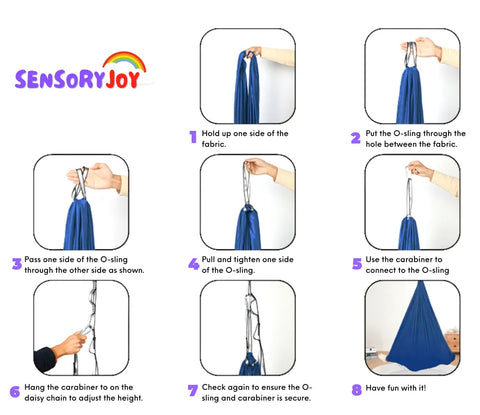
Yes, in fact the screws included are best for wooden ceilings. Alternatively, you can hang the swing with our Adjustable Doorway Hanger without any drilling.
Yes, our accessories include 1 x installation manual, 1 x carabiner, 1 x o-rope, 1 x daisy chain, 1 x ceiling mount bracket and 4 x screws.
Yes you can. It is fabric so I wouldn’t leave it out when it is not being used.
It is 100% nylon.
The swing fabric is made of 100% Nylon Tricot. It is very soft, breathable, and slightly see through, but very sturdy, strong enough to bear the weight of an adult. But please note the hanging straps can bear 200lbs only.
The swing is about 59" in width, 110" in height. Hanging hardwares and sling daisy strap are included in the package, fits for 8ft to 12ft ceiling.
Yes and air dry recommended.
We offer free shipping on orders above $99.
All orders are shipped from our warehouse within 2 to 5 business days of you placing the order. Most items will arrive in about 2-3 weeks or 7-15 business days unless stated otherwise.
We back our Cuddle Swing with a 1 year warranty from the date of purchase. So if it starts to wear, just let us know and we’ll send you a new one for free. We have email support that will respond within 24 hours. Use the Contact page if you need assistance.
We’ve partnered with Onward to provide our customers with carbon neutral shipping protection, CashBack and a 90-day satisfaction guarantee on your purchase. When you add Onward to your order, you’ll be protected against lost, stolen or damaged packages. You’ll also have a 90 day satisfaction guarantee where if you experience product quality issues, Onward will work with us to make it right or refund your purchase. As an additional benefit, you’ll receive 10% of your purchase as CashBack for your next order with us.
